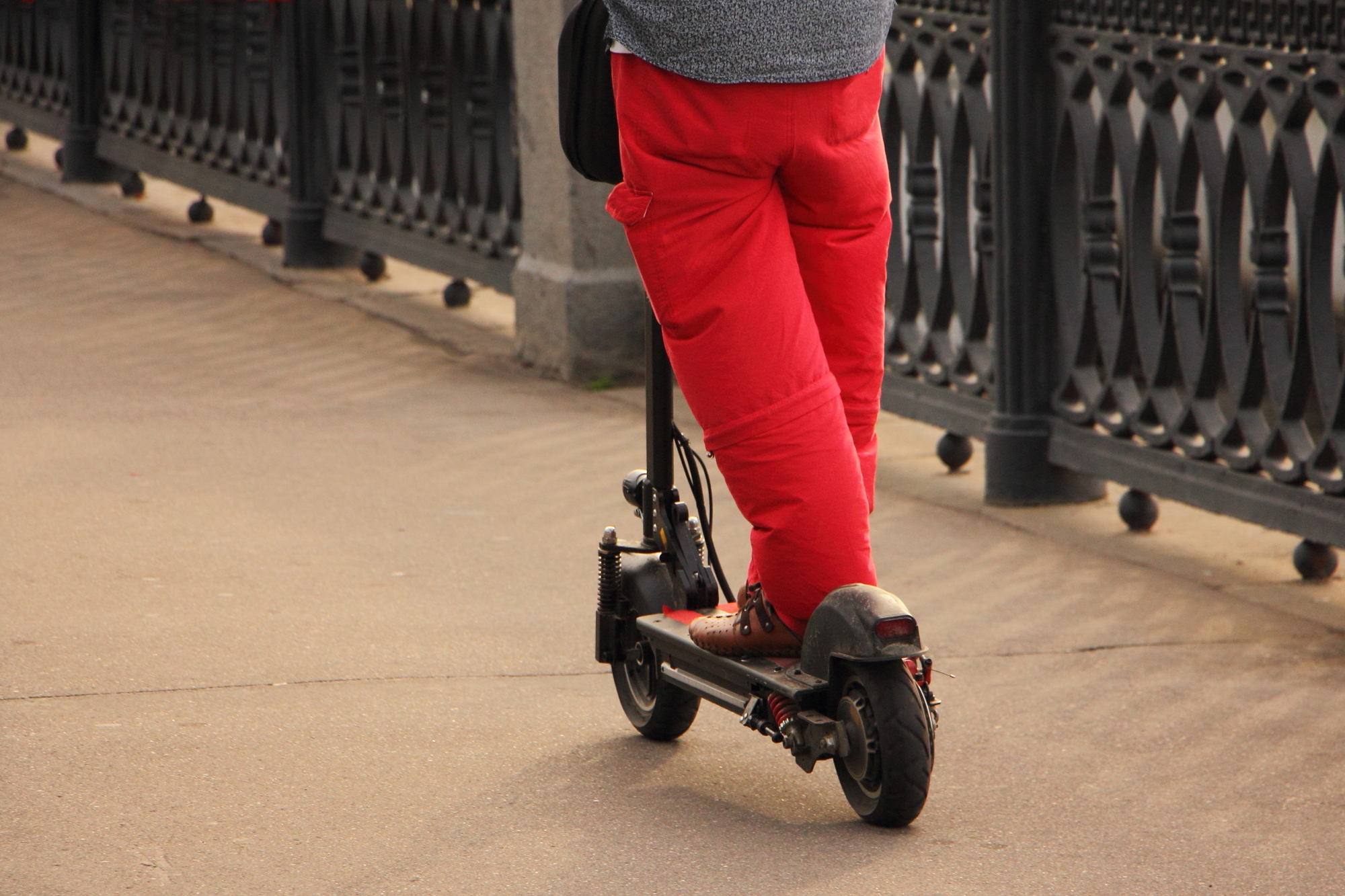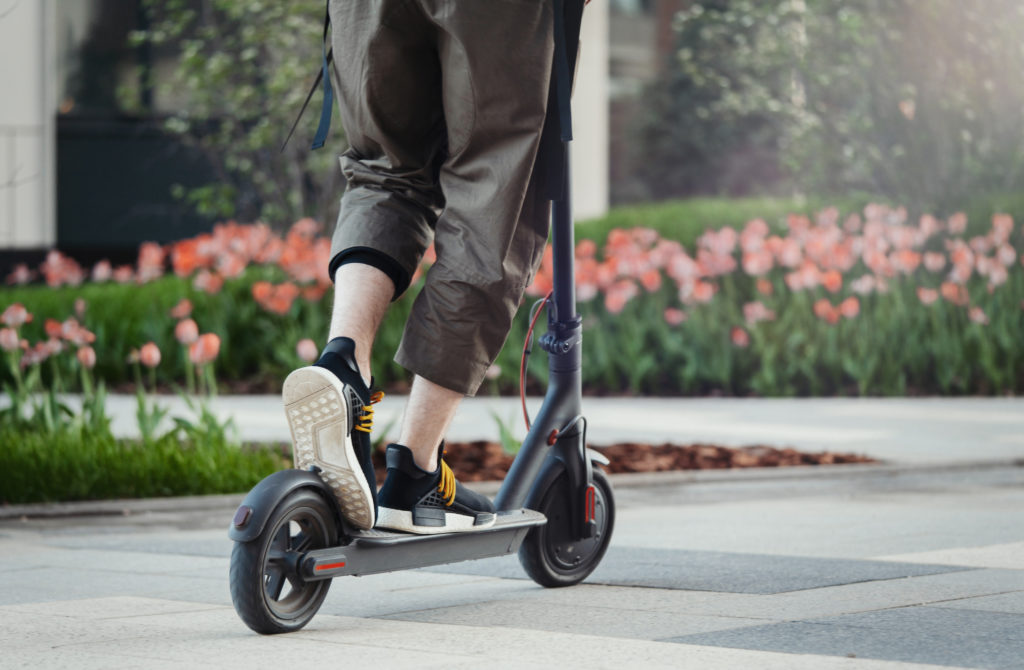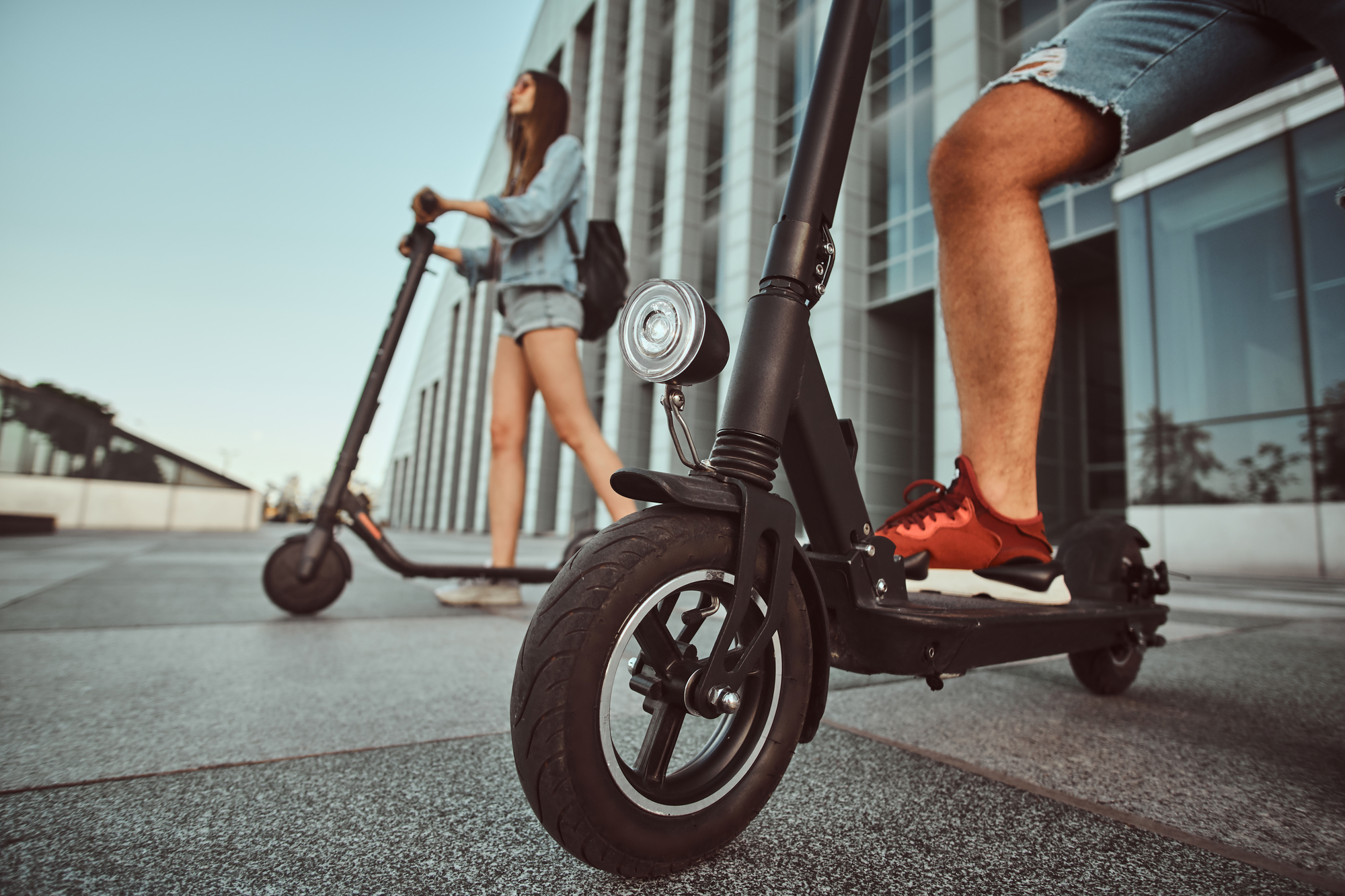Table of Contents
Climate change, environmentally friendly and going green are three phrases that we hear all the time. The global impact of pollution, deforestation and a general lack of concern for our planet means that it’s now in the fight for its life.
As governments worldwide work together to reduce the impacts of pollution, people are finally beginning to realise that we have a moral responsibility to protect the planet and its fragile ecosystem.
Plastic bag charges are a legal requirement in the UK, which will help to cut down on plastic polluting our oceans other water sources. Other changes include a no-nonsense approach to recycling waste, and the vegan movement continues to grow.
But perhaps the most critical change in how we go about our daily lives is how we travel.
While traditional petrol cars are still the most common form of transport, people are embracing PEV’s (plug-in electric vehicles) as a sustainable way to travel. Electric bikes, scooters, skateboards and even rollerblades are everywhere, but how much do you know about them?
This post will look at how electric scooters and other vehicles can promote green living and help the planet.
The Devastating Effect of Carbon Emissions on Our Planet

Carbon emissions (also called greenhouse gases) are released into the environment through factories, cars, planes and many other things. While carbon is a vital part of our planet, carbon dioxide can cause significant issues without a natural balance.
Nature itself works in harmony with carbon and other gases to provide us with a stable ecosystem. But man-made pollution means that we’re putting too much carbon dioxide into the environment, which – of course – results in high levels of pollution.
Efforts to reduce greenhouse gas emissions are everywhere, and people need to understand that the smallest of changes can make a world of difference to our planet and its inhabitants.
Let’s take a look at some of the best ways to reduce greenhouse gas emissions.
Cutting Down on Energy Bills
We live in a society where gas, electricity and other forms of energy are readily available. However, something as simple as turning off a light when you’re not in the room can make a positive difference.
Plenty of energy schemes are available to help people reduce the amount of carbon their household releases into the environment.
Changing Diets and Shopping Habits
It’s so easy to find whatever you want online, and most people don’t think about where their food is coming from. Buying local produce means you can cut down on transportation emissions, and organic eating further protects the environment.
Many consumers are turning to plant-based diets due to the adverse effects of factory farming, and these small changes continue to make a difference.
Sustainable Travel
A few years ago, nobody thought twice about jumping in their car for a five-minute drive to the local shop, but we now know that exhaust fumes are one of the biggest culprits when it comes to harmful emissions.
In recent years, more people leave their cars at home and opt for environmentally friendly transport options, such as bikes and public transport.
Carpooling is also a popular choice, but plug-in electric vehicles provide people with a sustainable way to travel without compromising convenience.
The History of Electric Vehicles
It might surprise you to know that electric cars have been around for close to 200 years? One of the first cars ever invented used electricity as power, but petrol became the popular choice because of how easy it was to refuel and the cost-effective qualities.
Fast forward many (many) years, and petrol cars continued to reign supreme, but that changed in 1997 with the Toyota company spearheading its Prius model. The car was the first mass-produced hybrid, and it served as inspiration for the Tesla Roadster and other electric vehicles that came after it.
Electric Bikes
The idea of an electric bike was conceived in the 1800s, but it only became a popular and more convenient alternative to traditional bikes in 1998. China is the first country to truly embrace electric bicycles as an alternate means of transportation, with 120 million models today.
Other countries such as the Netherlands are moving forward by introducing electric bikes, and they’ve become a popular alternative for commuters.
Cities around the UK have electric bikes available for rent, and they’re an excellent alternative to unreliable public transportation.
But, e-bikes have a very worthy competitor; electric scooters.
Electric Scooters
In 1925, manufacturers in New York created a gasoline-powered scooter know as the Autoped, but it failed to catch on. In recent years, e-scooters have become popular worldwide, but the UK proved a bit slower to introduce them to the streets.
Today, you’re just as likely to see electric scooters for rent as you are bikes. But why do so many people prefer the electric scooter?
One reason is its convenience, and the other can is attributable to style. Let’s face it, cruising around on an e-scooter is much more relaxed than a bike.
The Benefits of E-Scooters
To understand why electric scooters are making such a big impression on environmental activists, we must look at the other benefits they offer. Far from being practical for green living, the e-scooter provides many other advantages that set them apart from the average electric vehicle.
Cost
There are so many models available it’s near impossible to find one that doesn’t meet your budget when it comes to electric scooters. People spend thousands on even a second-hand car, but most e-scooters cost between £90 – 900, so there’s something for everyone.
Compact Design
Imagine never having to complete a reverse park again!
Supermarkets and other busy locations can be a car drivers worst nightmare, but scooters are renowned for their compact design. It’s much easier to park and store a scooter, which is why so many people view them as a better alternative.
Easy to Maintain
There are so many things that can go wrong with your car, but an electric scooter has a battery, motor and electrics. Maintaining your scooter is going to be much easier than dealing with the many components of your car.
Climate Change: Are Plug-In Electric Vehicles The Answer?

There are many benefits of electric scooters. Still, as a relatively new addition to the consumer market, we need to consider how climate change affects our planet and society before deciding.
Shockingly, scientists have been warning us for years that climate change could happen, and their threats weren’t empty. While some people don’t notice the effects, they’re everywhere.
From something as simple as taking five-minute car trips to more complex solutions like finding renewable energy sources, it’s clear that we’ll need to take significant steps to address climate change.
Let’s look at how climate change will continue to impact our planet if we don’t make the necessary changes.
Rising Temperatures Will Continue
If summer 2021 was anything to go by, we’re in for some hot weather in the future. It’s easy to see why people don’t think of this as a significant issue – why would we care when we’re getting such warm weather?
But as temperatures continue to rise throughout the world, warmer countries will feel the effects. Not to mention the melting glaciers, which impact polar bears and other wildlife that thrive in cold temperatures.
As countries experience warmer summers, droughts and heat waves are likely to continue. This could impact Namibia, India, China and the Seychelles, with rising temperatures leading to high poverty levels and heat-related deaths.
The Situation Will Worsen Over Time
It’s no secret that we’re past the preventative stage, and climate change is here to stay. However, the actions we take over the next few decades will determine whether we can find a balance between advancing as a society and protecting our planet.
While we cannot predict the damage, it’s clear that scientists know that failing to act now could result in devastating consequences in the next century.
Changes in Precipitation
According to an article published by The Guardian, global water vapour increases by 7% for every degree of warming. While this doesn’t shed much light on rainfall, if the atmosphere gets warmer, it will hold more moisture, encouraging higher precipitation levels.
Flooding could become common, and the imbalance could lead to some countries having significant precipitation levels that affect farming practices. In contrast, others could suffer from lower precipitation, which will cause droughts.
Rising Sea Levels
Since 1880 global sea levels have risen 8 inches, and they could increase between 1-8 ft by 2100. We can attribute this to the melting ice caps and rising temperatures which cause seawater to expand.
The ocean will take longer to respond to climate change, so even if we make an effort to halt it now, the effects of rising sea levels will continue for many years.
How Do Electric Scooters Help The Environment?

When it comes to conventional vehicles, there’s no question of their environmental impact. Fumes from exhausts and petrol are just two reasons why we should continue to embrace sustainable mobility solutions.
It’s no secret that petrol bars can be detrimental to our planet, but what are the effects of using one for your daily work and leisure needs?
The Cons of Traditional Cars
When thinking about everything cars offer us, it’s no surprise that society generally relies on the most popular mode of transportation.
A personal vehicle enables you to commute, visit family, enjoy the countryside and retain your independence.
But many people finally notice that the advantages of cars are no match for the risks they pose.
Depleting Fossil Fuels
Countries such as the USA and UK use a lot of petrol each year, but both need to import crude oil. According to the Energy Institute, researchers found that the UK imported 3.3 million tonnes of crude oil in 2018.
Most of this is used to power cars, and if each country cannot produce enough fossil fuels, it means importing is standard practice – which only adds to the problems posed by long-haul transportation of goods.
Air Pollution
Motor vehicles are one of the most significant contributors of nitrogen dioxide in the atmosphere, which causes acid rain. The cars are also responsible for 51% of carbon monoxide, resulting in higher levels of global warming and respiratory problems.
Noise Pollution
Cars can be a real nuisance when it comes to noise pollution. People living on busy roads often find their sleep is disrupted, and urban areas particularly suffer from the impact of noisy motor vehicles.
Car Waste Has a Significant Impact On the Environment
Petrol pumps can leak into the water supply, and offshore oil rigs can secrete dangerous gasses and toxins into the ocean. We also have to think about what happens when we no longer need our car.
They’re scrapped for parts in some cases, but unfortunately, many will go to landfills, harming the environment.
So, how exactly do electric scooters help the environment?
We should never underestimate the environmental impacts of traditional motor vehicles, which is why so many people choose electric cars, e-bikes and electric scooters.
Scooters are fun; there’s no doubt about it. But can they provide a convenient solution for real-world usage?
Peaceful Urban Living
Cars are incredibly noisy, and motorcycles are even worse.
If you’ve ever had your evening interrupted by the revving engine of a motorbike, you’ll understand why finding a quiet electric motor is becoming a necessity for urban living.
Scooter trips won’t disturb your neighbours, and you can make their lives a little bit easier. Furthermore, an electric scooter can reduce the congestion caused by cars. Many people travel to work in their vehicles, which creates excess morning and evening noise.
But as scooters are a lot quieter than cars. They’re almost silent. So if you’d like the benefits of urban living with the serenity of a countryside retreat, electric vehicles are the answer.
Lower Your Carbon Footprint
One of the biggest causes of carbon emissions is refuelling your vehicle. Petrol stations can cause a host of environmental problems, but e-scooters are ideal if you want a convenient mode of transportation but practice green living.
Scooters don’t require petrol to run, as they have a chargeable battery. All you need to do is plug them in and wait for the battery to recharge.
The critical thing to remember is that scooters create zero emissions, but each car emits 4.8 tons of greenhouse gases a year.
Technologically Advanced
Most electronic scooters take advantage of eco-friendly technology, so they’re ideal if you want to practice green living.
LED lights are common, which means that your scooter will last a lot longer because these lights are known to preserve energy rather than deplete it.
Other features include an electronic braking system, which can put 10% of the energy used to brake back into the battery.
Longer lasting batteries mean less need for a replacement, which is excellent news for landfills. It’s a known fact that a lithium-ion battery presents fewer risks than other batteries, but some components will still end up in landfills.
The eco-friendly nature of your e-scooter will make a big difference to your carbon footprint.
Life Cycle Analysis: Cars & Electric Scooters

When evaluating sustainability, it’s essential to look at the life cycle of products – especially those that rely on energy to run.
Just like human beings, cars and scooters have a lifecycle, but which promotes sustainability?
The Life Cycle of Cars
Every car begins its life in a factory, where manufacturers combine a range of parts, including the basic frame of a car, glass for windows, wheels, interior fittings and the engine. It’s estimated that around a quarter of a car’s components are from recycled parts.
Once the car is ready to go to consumers, it will head to a dealership and eventually begin its journey as a practical means of transportation.
Most cars will change hands at least once, with the average motor vehicle having five owners during its lifecycle.
In most cases, the average car will last for up to 13 years, or 200,000 miles, before it reaches the end of its life.
All cars reach the point of no return, but while this signifies the end of its operational cycle, the car still has a purpose.
Recycling centres will take apart your car and salvage any parts that could still be functional. Everything from your tyres to the fluids is repurposed, but the interior often ends up in landfills.
Most car parts will go to manufacturers, and factories will repurpose them to save on costs. In general, 75% of the average car is recyclable, but 25% will go to landfills. Considering that, according to Car Dealer, one million cars are scrapped each year, that’s a lot of pollution for the UK alone to contend with.
A Life Cycle Assessment of Electric Scooters
It’s no secret that electric bicycles and e-scooters are easier to maintain than cars.
They’re made of fewer parts, and while a gasoline-powered vehicle needs an MOT each year to evaluate its road safety features, most electric scooters require basic servicing and cleaning to remain operational.
The manufacturing process for electric scooters is relatively simple, and factories often use raw materials such as aluminium or carbon fibre for the frame. Electric motors are commonly made of magnets, copper wiring and metals, which leaves the battery.
In most cases, your e-scooter will have a lithium-based battery because they’re newer and more advanced than the traditional lead-acid batteries.
Manufacturers are commonly turning to lithium-ion batteries for scooters because of their energy-saving qualities. A lithium-based battery has a long charging cycle and will retain its capacity with regular charging.
Fundamentally, e-scooters have a good life span, but it’s crucial to consider their cost and how it relates to cars.
A second-hand car will set you back at least £1000, but you won’t get a modern vehicle with low mileage for that amount.
Electric scooters cost anything from £90 – £1000, and you won’t need to factor in extra costs such as MOT and servicing – because most people can maintain their scooter components without specialist support.
How Long Will an E-Scooter Last?
The main factor that impacts a scooters lifespan is whether yours is for shared or personal use. Shared e-scooters are everywhere right now, and you probably see them on the pavement and outside supermarkets.
People can rent these scooters and leave them when their journey is complete. So naturally, this will impact the lifespan of a shared scooter.
With so many left in the rain overnight, and people not treating them with enough care, a rental scooter will be operational for around five months before it needs repairs.
The good thing is, it’s straightforward to perform vital maintenance on an e-scooter, so the long-term outlook for shared e-scooters is often longer.
A personal scooter will last for a minimum of 2-3 years, but most will have a longer life cycle if they receive proper care and maintenance.
Scooters are growing in popularity, but it’s early days, and there is little information available about how the life cycle works. But, due to their cost-effective qualities and easy maintenance, electric scooters have a more promising life cycle than cars.
What Are the Benefits of Using an E – Scooter Over Other Vehicles or Walking?

We covered why electric scooters are better than cars previously, but what about other modes of transport? Both walking and public transport are popular ways to get from A to B, so let’s take a look at why an e-scooter could be the answer to city living.
Public Transport
Public transport (or mass transit) proves to be a valuable solution for commuters or individuals who can’t afford a car.
Buses, trains and trams are the most common forms of public transportation, and while it decreases personal energy use, many find their daily commute becomes a real headache.
Journey Delays
London trains are notorious for letting commuters down, and it’s common for railways to close, which at the very least causes long delays. In some cases, people can’t get home and find somewhere to sleep for the evening.
If you use an electric scooter, you can avoid delays and make your way home regardless of delays.
Traffic Jams
High congestion areas will always suffer, and sitting in a traffic jam for hours is nobodies idea of fun.
Buses can be an absolute nightmare if you live in a city such as Manchester or London, but electric scooters are incredibly compact, and you can make your way through traffic with relative ease.
Crowded
The London Underground is one of the worst places imaginable for people that value their personal space. The term ‘sardines in a can’ comes to mind, especially if you use the tube during the morning and evening commute.
E-scooters are great if you want to get around quickly but hate the idea of getting up close and personal with your fellow commuters.
High-Cost
The UK is one of the most expensive places in Europe for public transport. Except for London and Northern Ireland, commercial companies operate and own transport services, which means that the government regulates only London costs.
Depending on the zoning system, it’s still costly to travel in London, with an annual pass costing as much as £3000.
Electric scooters are ideal for short distances, so if you travel within London for work, you can get away with a much cheaper public transport arrangement.
Walking vs Electric Scooters

Walking is excellent if you want to lose weight and keep fit but avoid the gym. There’s no getting away from the fact that walking is the healthiest means of transportation, but there are some things to consider when it comes to stretching your legs each day.
Which is Faster?
On average, a person will walk at a speed of 3-4 miles per hour, whereas a scooter travels at 16 miles per hour, with higher-end models exceeding speeds of 50mph.
While only shared scooters are legal on UK public roads, the legislation is likely to change in the future, making electric scooters an efficient solution to get around.
Better for Cold Seasons
Let’s face it; nobody likes walking around in the winter. The UK is known for blustery winds, and rain so spending an hour walking to work isn’t exactly fun.
Electric scooters will help you reach your destination quicker, and they require less exertion on your part.
Ideal for People With Mobility Issues
Ideal for individuals with mobility issues, electric scooters can provide extra support while enabling people to avoid public transport. The electric motor does most of the work, so if you suffer from bad legs, you can still enjoy a stress-free journey.
Are E-Scooters Or Electric Bikes Better?
Micro mobility providers are working hard to provide the public with convenient transportation, and the two heavy hitters and e-bikes and e-scooters. There are advantages to each, but your location and personal preferences will dictate which is best for you.
Portability & Storage
If you live in rural areas, you have more choice about whether a bike or scooter fits your needs. Urban areas often lack space, and a scooter’s compact design and foldable features make it much each to store in your apartment.
Street Space
Parking can be a nightmare, and larger electric bikes will take up more space than a scooter. You’ll still need to find a spot and secure your bike, whereas the scooter is highly adaptable.
Making your way through traffic is much easier on a scooter than on a bike. While the average e-bike has more speed than a scooter, the cycle can restrict your movements, whereas e-scooters are slim, so they can easily weave through traffic.
The Future Of E-Scooters and PEV’s in an Ever-Changing Climate
With the real environmental impacts of unsustainable practices, it’s clear to see that electric vehicles are no longer a technological advancement but a necessity to protect our planet and preserve it for future generations.
Electric vehicles offer realistic and promising carbon offsets, and manufacturers are thinking about how they use energy now more than ever.
The only way to ensure a greener future is to understand that climate impact is genuine and impossible to avoid. In the coming years, e-bikes and scooters will become even more critical, and we believe that densely populated areas will embrace the electric scooter.
While other electricity-powered modes of transportation have their benefits, the compact design of the electric scooter and its accessibility means it provides an excellent alternative for commuters in busy cities.
Scooter sharing initiatives such as Voi and Bird Scooters are paving the way towards a sustainable future. Soon, we should expect to see the introduction of legislation allowing personal scooters for public roads across the UK.
So, if you want:
- An affordable way to travel.
- To save money on expensive vehicle maintenance.
- Compact transportation that won’t take up too much space.
- To contribute to the efforts to tackle climate change.
- A laid back yet fun way to get to where you need to be
E-Scooters are here to stay, so watch this space and get ready for the ride of your life.

